Deck 12: Alcohols and Phenols
Question
Question
Question
Question
Question
Question
Question
Question
Question
Question
Question
Question
Question
Question
Question
Question
Question
Question
Question
Question
Question
Question
Question
Question
Question
Question
Question
Question
Question
Question
Question
Question
Question
Question
Question
Question
Question
Question
Question
Question
Question
Question
Question
Question
Question
Question
Question
Question
Question
Question
Question
Question
Question
Question
Question
Question
Question
Question
Question
Question
Question
Question
Question
Question
Question
Question
Question
Question
Question
Question
Question
Question
Question
Question
Question
Question
Question
Question
Question
Question

Unlock Deck
Sign up to unlock the cards in this deck!
Unlock Deck
Unlock Deck
1/147
Play
Full screen (f)
Deck 12: Alcohols and Phenols
1
Provide the structure for 6-sec-butyl-7,7-dimethyl-4-decanol.
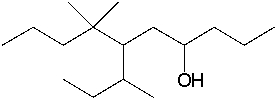
2
What is the IUPAC name for the following compound? 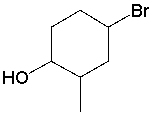
A) 2-methyl-5-bromocyclohexanol
B) 3-bromo-2-methylcyclohexanol
C) 1-bromo-4-methylcyclohexanol
D) 4-bromo-6-methylcyclohexanol
E) 4-bromo-2-methylcyclohexanol

A) 2-methyl-5-bromocyclohexanol
B) 3-bromo-2-methylcyclohexanol
C) 1-bromo-4-methylcyclohexanol
D) 4-bromo-6-methylcyclohexanol
E) 4-bromo-2-methylcyclohexanol
4-bromo-2-methylcyclohexanol
3
What is the IUPAC name for the following compound? 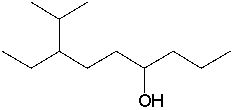

7-ethyl-8-methyl-4-nonanol
4
What is the IUPAC name for the following compound? 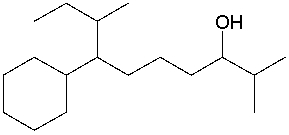


Unlock Deck
Unlock for access to all 147 flashcards in this deck.
Unlock Deck
k this deck
5
What is the IUPAC name for t-butyl alcohol?
A) 1-butanol
B) 2-methyl-1-propanol
C) 2-methyl-2-propanol
D) 2-butanol
E) 1,1-dimethyl-1-ethanol
A) 1-butanol
B) 2-methyl-1-propanol
C) 2-methyl-2-propanol
D) 2-butanol
E) 1,1-dimethyl-1-ethanol

Unlock Deck
Unlock for access to all 147 flashcards in this deck.
Unlock Deck
k this deck
6
Provide the structure for 5-chloro-2-propyl-1-heptanol.

Unlock Deck
Unlock for access to all 147 flashcards in this deck.
Unlock Deck
k this deck
7
What is the correct structure for 1-chloro-3-ethyl-2-pentanol? 
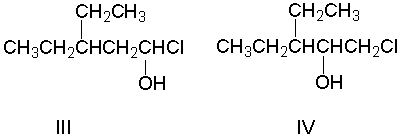
A) I
B) II
C) III
D) IV
E) None of these


A) I
B) II
C) III
D) IV
E) None of these

Unlock Deck
Unlock for access to all 147 flashcards in this deck.
Unlock Deck
k this deck
8
What is the IUPAC name for the following compound? 
A) (R)-3-hexyn-2-ol
B) (S)-3-hexyn-2-ol
C) (R)-2-hexyn-4-ol
D) (S)-2-hexyn-4-ol
E) (S)-2-hydroxy-3-hexyne

A) (R)-3-hexyn-2-ol
B) (S)-3-hexyn-2-ol
C) (R)-2-hexyn-4-ol
D) (S)-2-hexyn-4-ol
E) (S)-2-hydroxy-3-hexyne

Unlock Deck
Unlock for access to all 147 flashcards in this deck.
Unlock Deck
k this deck
9
What is the correct structure for 2,2-dibromo-1-methylcyclohexanol? 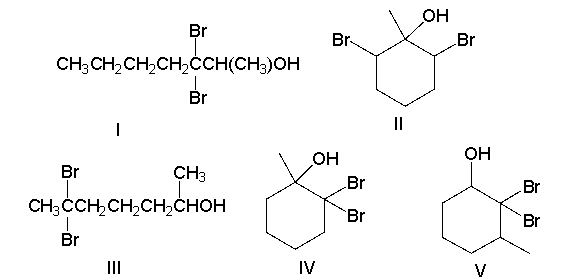
A) I
B) II
C) III
D) IV
E) V

A) I
B) II
C) III
D) IV
E) V

Unlock Deck
Unlock for access to all 147 flashcards in this deck.
Unlock Deck
k this deck
10
What is the IUPAC name for the following compound? 
A) 4-isopropyl-3,4-dimethyl-2-butanol
B) 2,3,4-trimethyl-4-pentanol
C) 1,1,2,3-tetramethyl-4-pentanol
D) 3,4,5-trimethyl-2-hexanol
E) 3,4,5,5-tetramethyl-2-pentanol

A) 4-isopropyl-3,4-dimethyl-2-butanol
B) 2,3,4-trimethyl-4-pentanol
C) 1,1,2,3-tetramethyl-4-pentanol
D) 3,4,5-trimethyl-2-hexanol
E) 3,4,5,5-tetramethyl-2-pentanol

Unlock Deck
Unlock for access to all 147 flashcards in this deck.
Unlock Deck
k this deck
11
What is the IUPAC name for the following compound? 
A) 3-methyl-4-ethyl-3-hexen-6-ol
B) 4-ethyl-3-methyl-3,6-hexenol
C) 3-ethyl-4-methyl-3-hexen-1-ol
D) 3-methyl-4-(2-hydroxyethyl)-3-hexene
E) 3-(2-hydroxyethyl)-3-methyl-3-hexene

A) 3-methyl-4-ethyl-3-hexen-6-ol
B) 4-ethyl-3-methyl-3,6-hexenol
C) 3-ethyl-4-methyl-3-hexen-1-ol
D) 3-methyl-4-(2-hydroxyethyl)-3-hexene
E) 3-(2-hydroxyethyl)-3-methyl-3-hexene

Unlock Deck
Unlock for access to all 147 flashcards in this deck.
Unlock Deck
k this deck
12
Give the structure for (E)-4,5,5-trimethyl-3-hepten-1-ol.

Unlock Deck
Unlock for access to all 147 flashcards in this deck.
Unlock Deck
k this deck
13
What is the IUPAC name for the following compound? 
A) 4-penten-2-methyl-2-ol
B) 4-methyl-1-penten-2-ol
C) 2-methyl-4-penten-2-ol
D) 4-methyl-1-penten-4-ol
E) 4-hydroxy-4-methyl-1-pentene

A) 4-penten-2-methyl-2-ol
B) 4-methyl-1-penten-2-ol
C) 2-methyl-4-penten-2-ol
D) 4-methyl-1-penten-4-ol
E) 4-hydroxy-4-methyl-1-pentene

Unlock Deck
Unlock for access to all 147 flashcards in this deck.
Unlock Deck
k this deck
14
What is the IUPAC name for the following compound? 
A) 1,1,1-triethylmethanol
B) 1,1-diethyl-1-propanol
C) 2-ethyl-3-pentanol
D) 3-ethyl-3-pentanol
E) t-heptanol

A) 1,1,1-triethylmethanol
B) 1,1-diethyl-1-propanol
C) 2-ethyl-3-pentanol
D) 3-ethyl-3-pentanol
E) t-heptanol

Unlock Deck
Unlock for access to all 147 flashcards in this deck.
Unlock Deck
k this deck
15
What is the IUPAC name for isobutyl alcohol?
A) 2-methyl-1-propanol
B) 2-methyl-1-butanol
C) 1-methyl-1-propanol
D) 1,1-dimethyl-1-ethanol
E) 3-methyl-1-propanol
A) 2-methyl-1-propanol
B) 2-methyl-1-butanol
C) 1-methyl-1-propanol
D) 1,1-dimethyl-1-ethanol
E) 3-methyl-1-propanol

Unlock Deck
Unlock for access to all 147 flashcards in this deck.
Unlock Deck
k this deck
16
What is the correct structure for (E)-5,5-dimethyl-3-hepten-1-ol? 
A) I
B) II
C) III
D) IV
E) V

A) I
B) II
C) III
D) IV
E) V

Unlock Deck
Unlock for access to all 147 flashcards in this deck.
Unlock Deck
k this deck
17
What is the IUPAC name for the following compound? 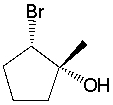


Unlock Deck
Unlock for access to all 147 flashcards in this deck.
Unlock Deck
k this deck
18
What is the IUPAC name for the following compound? 
A) 1-isopropyl-4-cyclopentanol
B) 3-isopropylcyclopentanol
C) 1-isopropyl-3-cyclopentanol
D) 1-isopropyl-4-hydroxycyclopentane
E) None of these

A) 1-isopropyl-4-cyclopentanol
B) 3-isopropylcyclopentanol
C) 1-isopropyl-3-cyclopentanol
D) 1-isopropyl-4-hydroxycyclopentane
E) None of these

Unlock Deck
Unlock for access to all 147 flashcards in this deck.
Unlock Deck
k this deck
19
What is the IUPAC name for the following compound? 


Unlock Deck
Unlock for access to all 147 flashcards in this deck.
Unlock Deck
k this deck
20
What is the IUPAC name for the following compound? 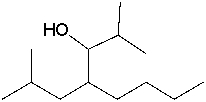


Unlock Deck
Unlock for access to all 147 flashcards in this deck.
Unlock Deck
k this deck
21
What is the IUPAC name for the following compound? 


Unlock Deck
Unlock for access to all 147 flashcards in this deck.
Unlock Deck
k this deck
22
What is the IUPAC name for the following compound? 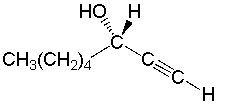


Unlock Deck
Unlock for access to all 147 flashcards in this deck.
Unlock Deck
k this deck
23
What is the IUPAC name for the following compound? 
A) cis-1,2-cyclopentanediol
B) meso-1,2-cyclopentanediol
C) (1R,2R)-1,2-cyclopentanediol
D) (1R,2S)-1,2-cyclopentanediol
E) (1S,2S)-1,2-cyclopentanediol

A) cis-1,2-cyclopentanediol
B) meso-1,2-cyclopentanediol
C) (1R,2R)-1,2-cyclopentanediol
D) (1R,2S)-1,2-cyclopentanediol
E) (1S,2S)-1,2-cyclopentanediol

Unlock Deck
Unlock for access to all 147 flashcards in this deck.
Unlock Deck
k this deck
24
Identify the alcohol in alcoholic drinks.
A) methanol
B) 2-propanol
C) ethanol
D) 1-butanol
E) 1-propanol
A) methanol
B) 2-propanol
C) ethanol
D) 1-butanol
E) 1-propanol

Unlock Deck
Unlock for access to all 147 flashcards in this deck.
Unlock Deck
k this deck
25
Identify wood alcohol.
A) methanol
B) 2-propanol
C) ethanol
D) 1-butanol
E) 1-propanol
A) methanol
B) 2-propanol
C) ethanol
D) 1-butanol
E) 1-propanol

Unlock Deck
Unlock for access to all 147 flashcards in this deck.
Unlock Deck
k this deck
26
Identify rubbing alcohol.
A) methanol
B) 2-propanol
C) ethanol
D) 1-butanol
E) 1-propanol
A) methanol
B) 2-propanol
C) ethanol
D) 1-butanol
E) 1-propanol

Unlock Deck
Unlock for access to all 147 flashcards in this deck.
Unlock Deck
k this deck
27
Rank the following alcohols in decreasing order of acidity. Explain your answer. 
A) II > I > III
B)I > II > III
C)I > III > II
D)III > I > II
E) III > II > I

A) II > I > III
B)I > II > III
C)I > III > II
D)III > I > II
E) III > II > I

Unlock Deck
Unlock for access to all 147 flashcards in this deck.
Unlock Deck
k this deck
28
What is the IUPAC name for the following compound? HOCH2CH2CH2OH
A) 1,2-butanediol
B) isopropyl alcohol
C) 1-propanol
D) 1,3-propanediol
E) 1,2-ethanediol
A) 1,2-butanediol
B) isopropyl alcohol
C) 1-propanol
D) 1,3-propanediol
E) 1,2-ethanediol

Unlock Deck
Unlock for access to all 147 flashcards in this deck.
Unlock Deck
k this deck
29
Explain why cyclohexanol has a pKa of 18 and phenol has a pKa of 10. Use structural drawings to explain your reasoning.

Unlock Deck
Unlock for access to all 147 flashcards in this deck.
Unlock Deck
k this deck
30
What is the correct structure for 2-methylphenol? 
A) I
B) II
C) III
D) IV
E) V

A) I
B) II
C) III
D) IV
E) V

Unlock Deck
Unlock for access to all 147 flashcards in this deck.
Unlock Deck
k this deck
31
What is the IUPAC name for the following compound? 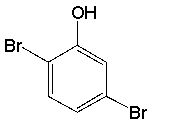
A) 3,4-dibromophenol
B) 2,4-dibromophenol
C) 2,5-dibromophenol
D) 3,6-dibromophenol
E) 2,6-dibromophenol

A) 3,4-dibromophenol
B) 2,4-dibromophenol
C) 2,5-dibromophenol
D) 3,6-dibromophenol
E) 2,6-dibromophenol

Unlock Deck
Unlock for access to all 147 flashcards in this deck.
Unlock Deck
k this deck
32
What is the IUPAC name for the following compound? 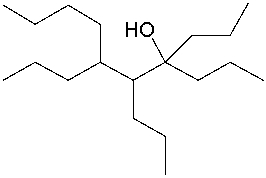


Unlock Deck
Unlock for access to all 147 flashcards in this deck.
Unlock Deck
k this deck
33
Identify the type of bonding between molecules of alcohol.
A) ion-ion
B) van der Waals forces
C) hydrogen bonding
D) ion-dipole
E) London dispersion
A) ion-ion
B) van der Waals forces
C) hydrogen bonding
D) ion-dipole
E) London dispersion

Unlock Deck
Unlock for access to all 147 flashcards in this deck.
Unlock Deck
k this deck
34
What is the correct structure for 2-bromo-5-isopropylphenol? 
A) I
B) II
C) III
D) IV
E) V

A) I
B) II
C) III
D) IV
E) V

Unlock Deck
Unlock for access to all 147 flashcards in this deck.
Unlock Deck
k this deck
35
Rank the following alcohols in decreasing order of acidity. 
A) II > I > III
B) I > II > III
C) I > III > II
D) III > I > II
E) III > II > I

A) II > I > III
B) I > II > III
C) I > III > II
D) III > I > II
E) III > II > I

Unlock Deck
Unlock for access to all 147 flashcards in this deck.
Unlock Deck
k this deck
36
What is the IUPAC name for the following compound? 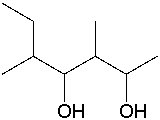


Unlock Deck
Unlock for access to all 147 flashcards in this deck.
Unlock Deck
k this deck
37
Provide the structure for (2R,3S) -2-bromo-1,3-pentanediol.

Unlock Deck
Unlock for access to all 147 flashcards in this deck.
Unlock Deck
k this deck
38
Identify grain alcohol.
A) methanol
B) 2-propanol
C) ethanol
D) 1-butanol
E) 1-propanol
A) methanol
B) 2-propanol
C) ethanol
D) 1-butanol
E) 1-propanol

Unlock Deck
Unlock for access to all 147 flashcards in this deck.
Unlock Deck
k this deck
39
What is the IUPAC name for the following compound? 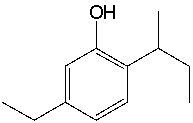


Unlock Deck
Unlock for access to all 147 flashcards in this deck.
Unlock Deck
k this deck
40
Which one of the following alcohols is most acidic? 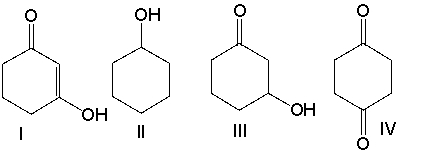
A) I
B) II
C) III
D) IV

A) I
B) II
C) III
D) IV

Unlock Deck
Unlock for access to all 147 flashcards in this deck.
Unlock Deck
k this deck
41
Identify the characteristics of the acid-catalyzed hydration of an alkene.
A) Markovnikov, with rearrangement possible
B) Markovnikov, with no rearrangement possible
C) anti-Markovnikov, with rearrangement possible
D) anti-Markovnikov, with no rearrangement possible
A) Markovnikov, with rearrangement possible
B) Markovnikov, with no rearrangement possible
C) anti-Markovnikov, with rearrangement possible
D) anti-Markovnikov, with no rearrangement possible

Unlock Deck
Unlock for access to all 147 flashcards in this deck.
Unlock Deck
k this deck
42
Predict the product(s) for the following reaction. 


Unlock Deck
Unlock for access to all 147 flashcards in this deck.
Unlock Deck
k this deck
43
Provide the reagents necessary to carry out the following conversion. 


Unlock Deck
Unlock for access to all 147 flashcards in this deck.
Unlock Deck
k this deck
44
Predict the product for the following reaction. 

A) I
B) II
C) III
D) IV
E) None of these


A) I
B) II
C) III
D) IV
E) None of these

Unlock Deck
Unlock for access to all 147 flashcards in this deck.
Unlock Deck
k this deck
45
Predict the product(s) for the following reaction. 


Unlock Deck
Unlock for access to all 147 flashcards in this deck.
Unlock Deck
k this deck
46
What are the oxidation states of carbon atoms I and II in the following reaction? 
A) I. +1, II. +2
B) I. +2, II. +2
C) I. +1, II. +3
D) I. +3, II. +2
E) I. +2, II. +1

A) I. +1, II. +2
B) I. +2, II. +2
C) I. +1, II. +3
D) I. +3, II. +2
E) I. +2, II. +1

Unlock Deck
Unlock for access to all 147 flashcards in this deck.
Unlock Deck
k this deck
47
For the following conversion, identify if the starting material has been oxidized, reduced or neither. Explain your answer. 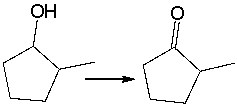


Unlock Deck
Unlock for access to all 147 flashcards in this deck.
Unlock Deck
k this deck
48
For the following conversion, identify if the starting material has been oxidized, reduced or neither. Explain your answer. 


Unlock Deck
Unlock for access to all 147 flashcards in this deck.
Unlock Deck
k this deck
49
Identify the characteristics of the hydroboration-oxidation of an alkene.
A) Markovnikov, with rearrangement possible
B) Markovnikov, with no rearrangement possible
C) anti-Markovnikov, with rearrangement possible
D) anti-Markovnikov, with no rearrangement possible
A) Markovnikov, with rearrangement possible
B) Markovnikov, with no rearrangement possible
C) anti-Markovnikov, with rearrangement possible
D) anti-Markovnikov, with no rearrangement possible

Unlock Deck
Unlock for access to all 147 flashcards in this deck.
Unlock Deck
k this deck
50
Predict the major product for the following reaction. 


Unlock Deck
Unlock for access to all 147 flashcards in this deck.
Unlock Deck
k this deck
51
Provide the reagents necessary to carry out the following conversion. 


Unlock Deck
Unlock for access to all 147 flashcards in this deck.
Unlock Deck
k this deck
52
Identify the characteristics of the oxymercuration-demercuration of an alkene.
A) Markovnikov, with rearrangement possible
B) Markovnikov, with no rearrangement possible
C) anti-Markovnikov, with rearrangement possible
D) anti-Markovnikov, with no rearrangement possible
A) Markovnikov, with rearrangement possible
B) Markovnikov, with no rearrangement possible
C) anti-Markovnikov, with rearrangement possible
D) anti-Markovnikov, with no rearrangement possible

Unlock Deck
Unlock for access to all 147 flashcards in this deck.
Unlock Deck
k this deck
53
Provide the reagents necessary to carry out the following conversion. 
A) NaOH/H2O
B) 1. NaOCH3, 2. H3O+
C) 1. (CH3)3COK, 2. BH3•THF, 3. H2O2/NaOH/H2O
D) 1. (CH3)3COK, 2. H3O+
E) B & D

A) NaOH/H2O
B) 1. NaOCH3, 2. H3O+
C) 1. (CH3)3COK, 2. BH3•THF, 3. H2O2/NaOH/H2O
D) 1. (CH3)3COK, 2. H3O+
E) B & D

Unlock Deck
Unlock for access to all 147 flashcards in this deck.
Unlock Deck
k this deck
54
Provide the reagents necessary to carry out the following conversion. 


Unlock Deck
Unlock for access to all 147 flashcards in this deck.
Unlock Deck
k this deck
55
Predict the product for the following reaction. 


Unlock Deck
Unlock for access to all 147 flashcards in this deck.
Unlock Deck
k this deck
56
Rank the following alcohols in decreasing order of acidity. 
A) II > I > III
B) I > II > III
C) I > III > II
D) III > I > II
E) III > II > I

A) II > I > III
B) I > II > III
C) I > III > II
D) III > I > II
E) III > II > I

Unlock Deck
Unlock for access to all 147 flashcards in this deck.
Unlock Deck
k this deck
57
Predict the product(s) for the following reaction. 

A) I
B) II
C) III
D) IV
E) None of these


A) I
B) II
C) III
D) IV
E) None of these

Unlock Deck
Unlock for access to all 147 flashcards in this deck.
Unlock Deck
k this deck
58
Predict the product for the following reaction. 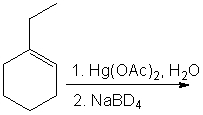

A) I
B) II
C) III
D) IV
E) V


A) I
B) II
C) III
D) IV
E) V

Unlock Deck
Unlock for access to all 147 flashcards in this deck.
Unlock Deck
k this deck
59
For the following conversion, identify if the starting material has been oxidized, reduced or neither. 


Unlock Deck
Unlock for access to all 147 flashcards in this deck.
Unlock Deck
k this deck
60
What are the oxidation states of carbon atoms I and II in the following compound? 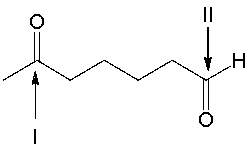
A) I. +1, II. +2
B) I. +2, II. +2
C) I. +1, II. +3
D) I. +3, II. +2
E) I. +2, II. +1

A) I. +1, II. +2
B) I. +2, II. +2
C) I. +1, II. +3
D) I. +3, II. +2
E) I. +2, II. +1

Unlock Deck
Unlock for access to all 147 flashcards in this deck.
Unlock Deck
k this deck
61
Predict the product(s) for the following reaction. 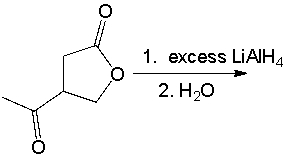


Unlock Deck
Unlock for access to all 147 flashcards in this deck.
Unlock Deck
k this deck
62
Predict the product for the following reaction. 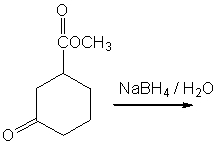


Unlock Deck
Unlock for access to all 147 flashcards in this deck.
Unlock Deck
k this deck
63
Provide the reagents necessary to carry out the following conversion. 
A) KMnO4, NaOH,H2O
B) KMnO4, H3O+, 75oC
C) H2SO4, heat
D) 1. mCPBA 2. H3O+
E) none of these

A) KMnO4, NaOH,H2O
B) KMnO4, H3O+, 75oC
C) H2SO4, heat
D) 1. mCPBA 2. H3O+
E) none of these

Unlock Deck
Unlock for access to all 147 flashcards in this deck.
Unlock Deck
k this deck
64
Predict the product(s) for the following reaction. 

A) I
B) II
C) III
D) IV
E) none of these


A) I
B) II
C) III
D) IV
E) none of these

Unlock Deck
Unlock for access to all 147 flashcards in this deck.
Unlock Deck
k this deck
65
Predict the product for the following reaction. 

A) I
B) II
C) III
D) IV


A) I
B) II
C) III
D) IV

Unlock Deck
Unlock for access to all 147 flashcards in this deck.
Unlock Deck
k this deck
66
Provide the reagents necessary to carry out the following conversion. 
A) KMnO4, NaOH,H2O,cold
B) KMnO4, H3O+, 75oC
C) H2SO4, heat
D) 1. mCPBA 2. H3O+
E) none of these

A) KMnO4, NaOH,H2O,cold
B) KMnO4, H3O+, 75oC
C) H2SO4, heat
D) 1. mCPBA 2. H3O+
E) none of these

Unlock Deck
Unlock for access to all 147 flashcards in this deck.
Unlock Deck
k this deck
67
Predict the product for the following reaction. 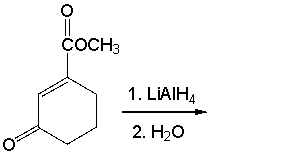


Unlock Deck
Unlock for access to all 147 flashcards in this deck.
Unlock Deck
k this deck
68
Provide the reagent(s) necessary to carry out the following conversion. 


Unlock Deck
Unlock for access to all 147 flashcards in this deck.
Unlock Deck
k this deck
69
For the following conversion, identify if the starting material has been oxidized, reduced or neither. 
A) reduced
B) oxidized
C) neither
D) A & B

A) reduced
B) oxidized
C) neither
D) A & B

Unlock Deck
Unlock for access to all 147 flashcards in this deck.
Unlock Deck
k this deck
70
For the following conversion, identify if the starting material has been oxidized, reduced or neither. 
A) reduced
B) oxidized
C) neither
D) A & B

A) reduced
B) oxidized
C) neither
D) A & B

Unlock Deck
Unlock for access to all 147 flashcards in this deck.
Unlock Deck
k this deck
71
Predict the product(s) for the following reaction sequence. 

A) I
B) II
C) III
D) Both I & II
E) None of these


A) I
B) II
C) III
D) Both I & II
E) None of these

Unlock Deck
Unlock for access to all 147 flashcards in this deck.
Unlock Deck
k this deck
72
Predict the product for the following reaction. 


Unlock Deck
Unlock for access to all 147 flashcards in this deck.
Unlock Deck
k this deck
73
Predict the product for the following reaction. 


Unlock Deck
Unlock for access to all 147 flashcards in this deck.
Unlock Deck
k this deck
74
Provide the reactant (A) for the following reaction. 

A) I
B) II
C) III
D) IV
E) V


A) I
B) II
C) III
D) IV
E) V

Unlock Deck
Unlock for access to all 147 flashcards in this deck.
Unlock Deck
k this deck
75
Predict the product for the following reaction sequence. 


Unlock Deck
Unlock for access to all 147 flashcards in this deck.
Unlock Deck
k this deck
76
Predict the product for the following reaction. 
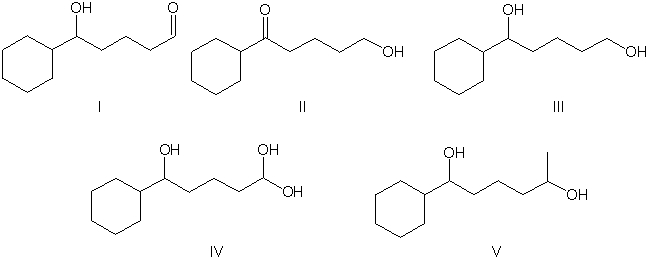
A) I
B) II
C) III
D) IV
E) V


A) I
B) II
C) III
D) IV
E) V

Unlock Deck
Unlock for access to all 147 flashcards in this deck.
Unlock Deck
k this deck
77
Provide the structure of each product (A-D) in the following reaction sequence. 


Unlock Deck
Unlock for access to all 147 flashcards in this deck.
Unlock Deck
k this deck
78
Provide the reagent(s) necessary to carry out the following conversion. 


Unlock Deck
Unlock for access to all 147 flashcards in this deck.
Unlock Deck
k this deck
79
Predict the product for the following reaction. 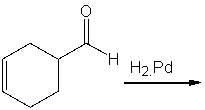

A) I
B) II
C) III
D) IV


A) I
B) II
C) III
D) IV

Unlock Deck
Unlock for access to all 147 flashcards in this deck.
Unlock Deck
k this deck
80
Which one of the following compounds gives 5-methyl-3-heptanol with LiAlH4 followed by water? 
A) I
B) II
C) III
D) IV
E) V

A) I
B) II
C) III
D) IV
E) V

Unlock Deck
Unlock for access to all 147 flashcards in this deck.
Unlock Deck
k this deck



